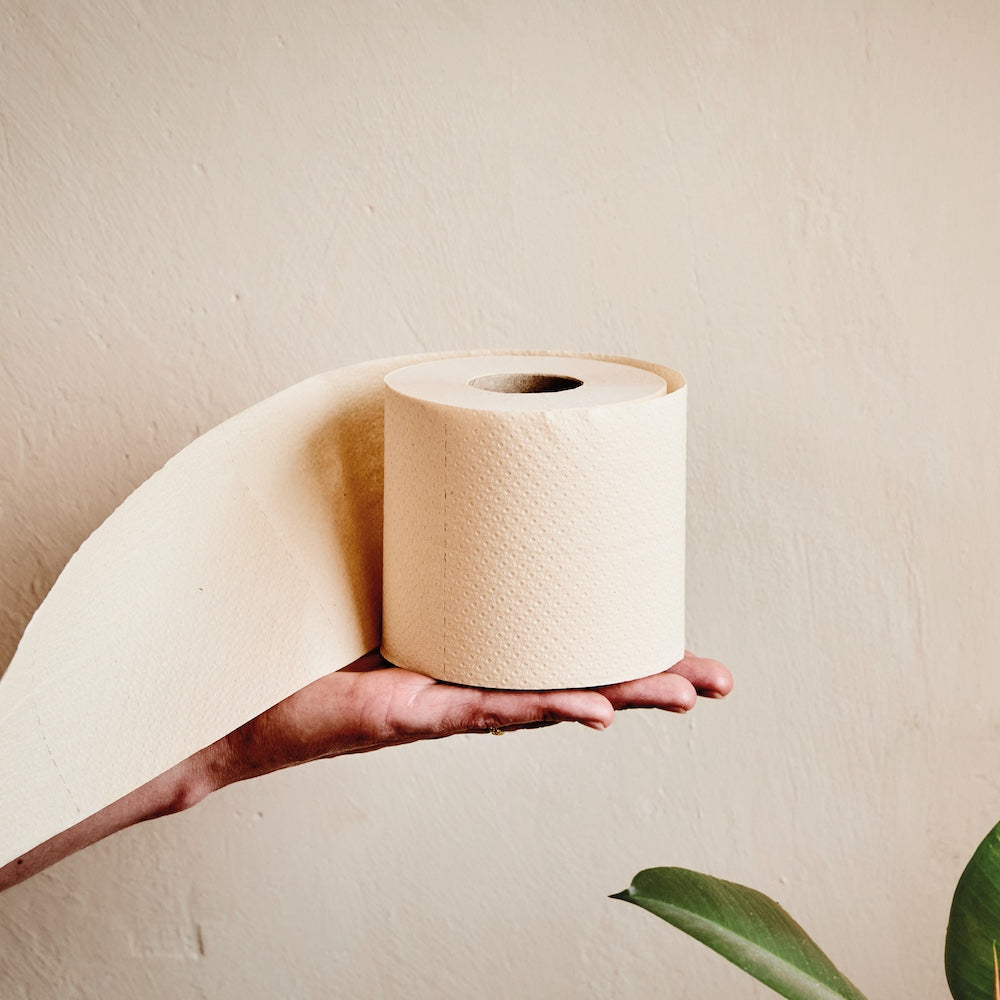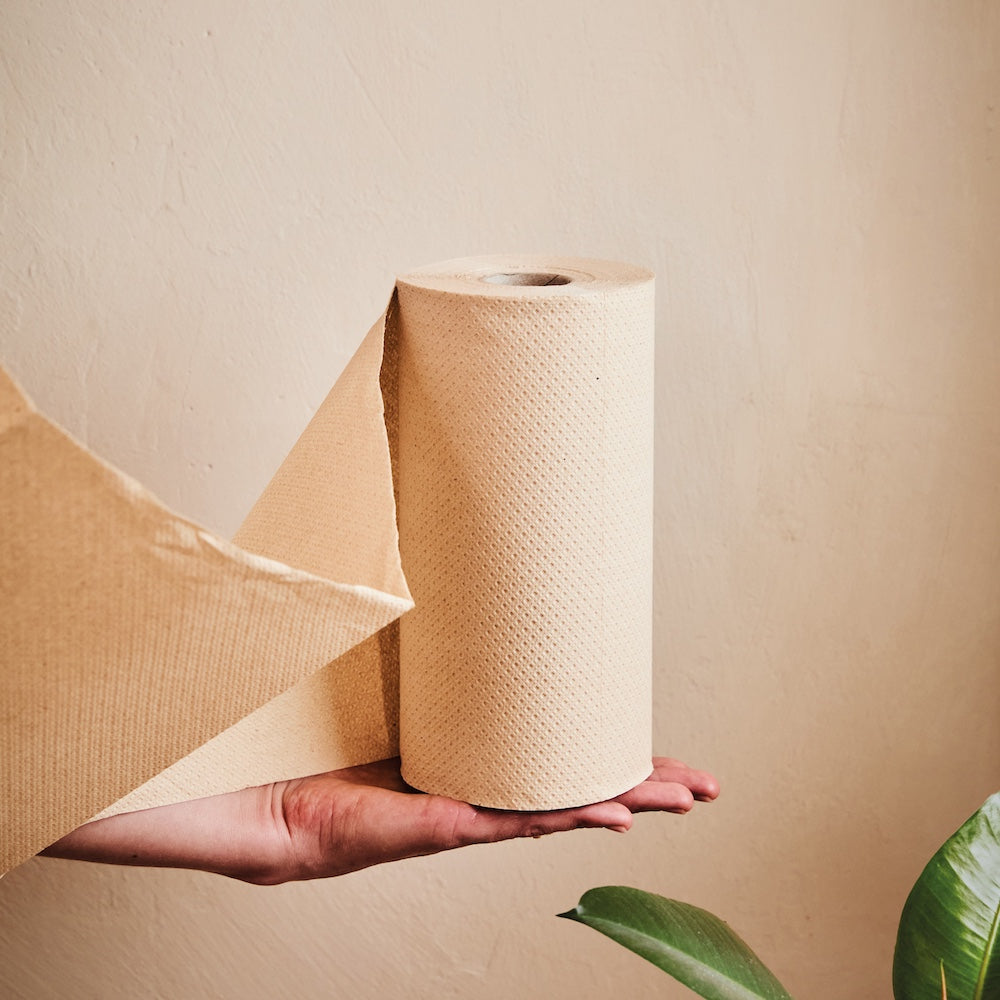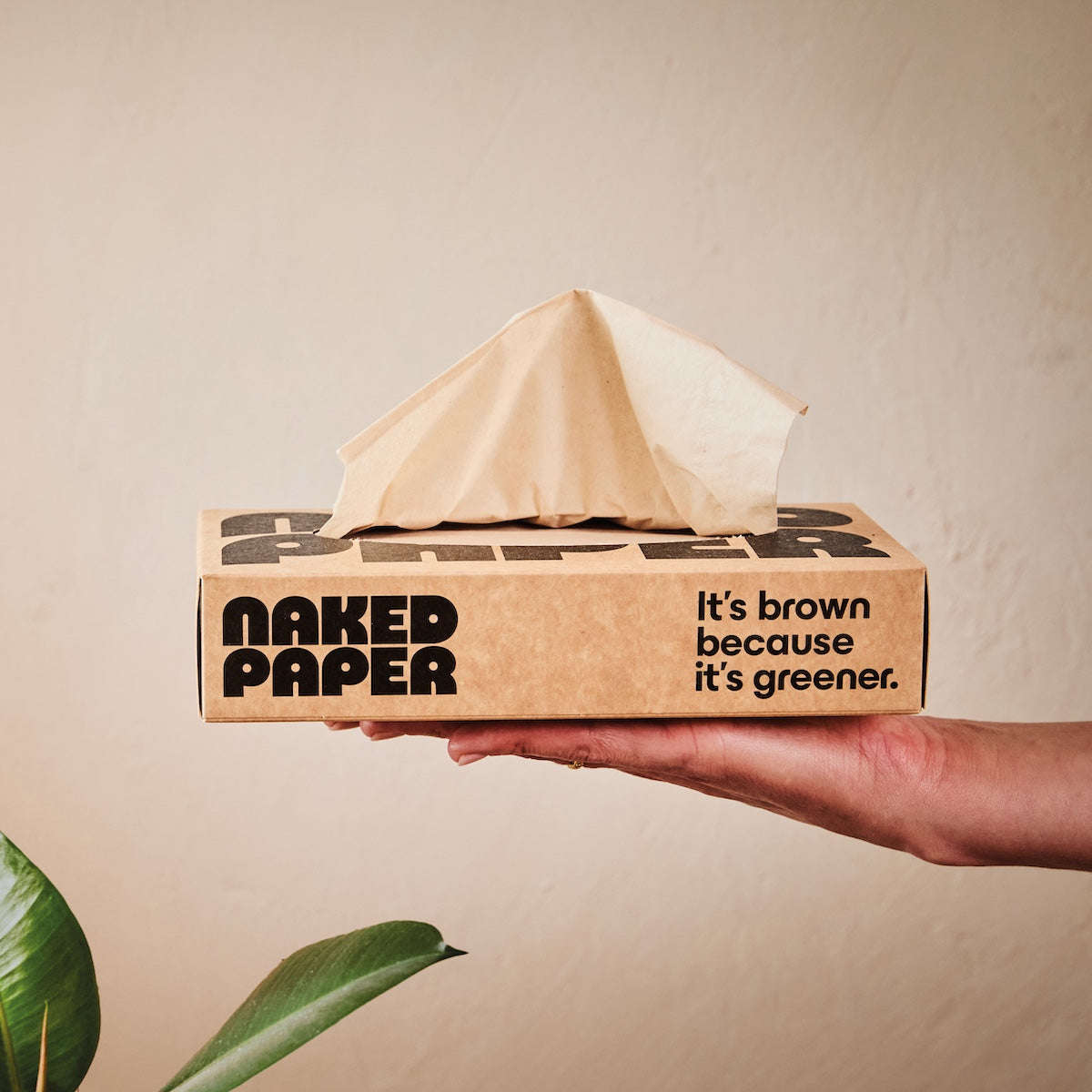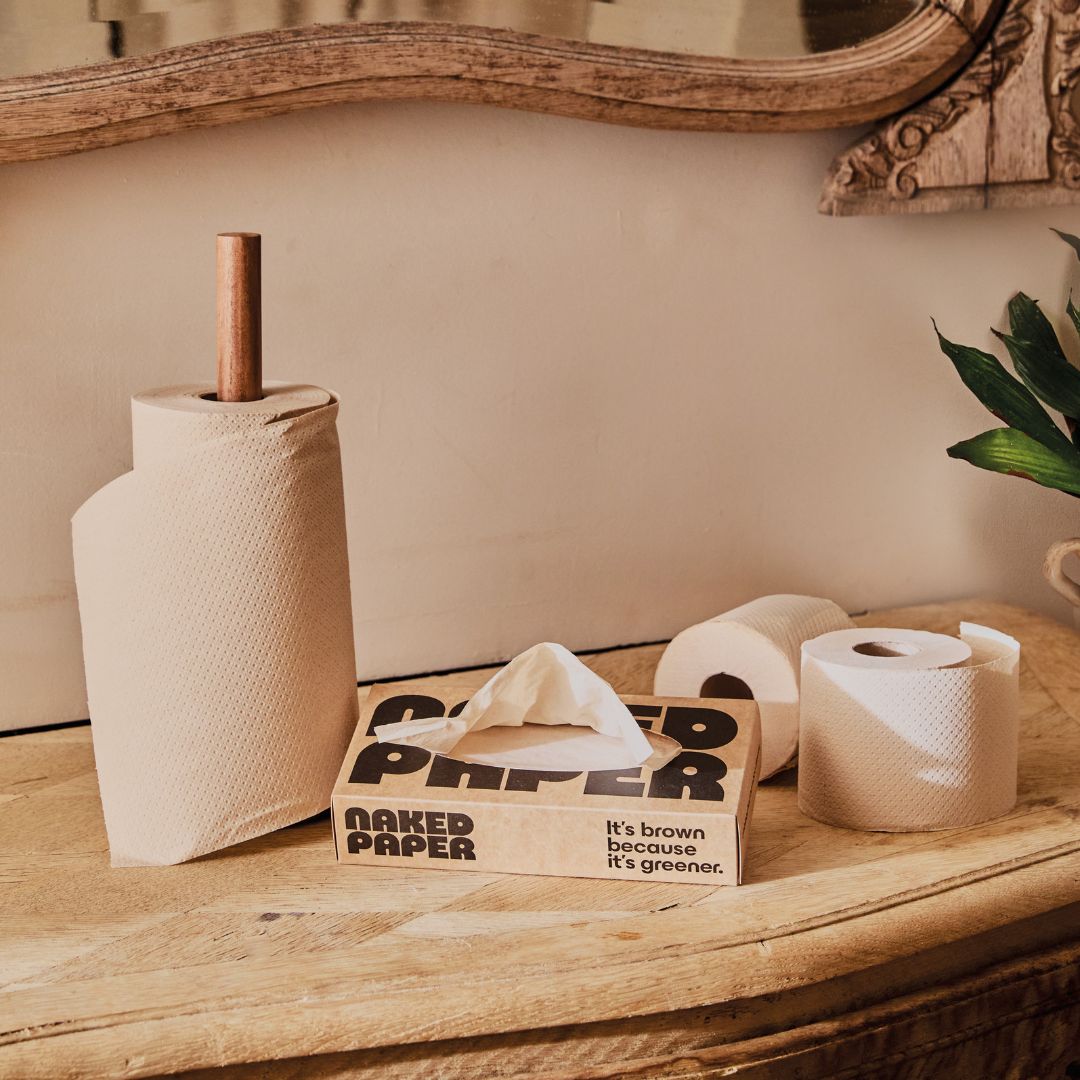Can you recycle kitchen roll?

It’s a common scene; You’re standing in your kitchen, holding an empty jar or box or bottle, or (if you’re one of our lovely customers), a sheet of bleach-free kitchen roll. You’re hovering over the recycling bin, and you’re wondering: can this actually be recycled?
For those of us in the UK the picture gets even more complicated because different local authorities will recycle different kinds of waste, and the way that waste is collected can change depending on which area, or even which street, you live on.
Well, when it comes to kitchen roll we can answer the question definitively. It might be bleach-free, it might be more sustainable, it might be made without harsh chemicals or plastic. But you shouldn't put any kitchen roll, even ours, in the recycling.
Here’s why.

What happens to household recycling in the UK?
When you recycle paper and card at home, it’s usually collected, sorted, and processed to make new paper products. These might include newspapers, packaging, egg boxes, and more.
We make our own recycled toilet paper at Naked Paper, so we’ve got a bit of insight into the process. To make new goods out of recycled material you need to sort out non-paper elements (like staples or blobs of glue), clean and filter the remaining paper, and then break it down to make new pulp.
For the process to work properly, the input material needs to be clean, strong, and free of contamination, and the fibres they contain need to be strong enough for the products you intend to make.
This is why not everything that looks recyclable is actually recyclable. We’ll get to why kitchen roll doesn’t fit the bill in a moment, but first let’s consider what happens if you end up with too much non-recyclable material in the recycling bin.

What happens when recycling is contaminated?
Recycling systems are designed to process certain materials, and only those materials. When something ends up in the recycling bin that shouldn’t be there, it’s called contamination.
If there’s too much contamination in a batch, it may be rejected altogether and sent to landfill or incineration. We’ll give a real-world example from Brighton, since that’s where a lot of the Naked Paper team are based. In 2022 Brighton and Hove council announced that 10-15% of all household recycling was contaminated by material that shouldn’t be there, and had ended up being incinerated as a result.
Contamination can come from food waste, cleaning chemicals, liquids, or simply the wrong type of material. That’s why it’s worth having a second look at local guidelines to make sure that you’re recycling things that can actually be recycled.
Which brings us back to kitchen roll.

So, why can't kitchen roll be recycled?
Wherever you are in the UK, you shouldn’t put kitchen roll or paper towels in your household paper and card recycling.
This might seem odd; kitchen roll looks like paper, feels like paper, and it is quite literally a type of paper. So why can’t it be recycled with your junk mail and cereal boxes?
There are two main reasons:
The fibres are too short.
Kitchen rolls are made to be soft and absorbent. Like any type of tissue, it’s made using shorter fibres which soak up liquid more effectively.
But absorbency comes at a cost. When you’re collecting paper for recycling you want cardboard, kraft paper, or printed documents that are made from fibres that are longer and stronger. The short fibres you get in kitchen roll weaken the mix and reduce the quality of the recycled product.
Even strong, high-grade office paper can only be recycled around five to seven times before the fibres become too short. At that point, they’re no longer useful for most paper products. That’s why fresh, or “virgin,” pulp is often added to the mix to maintain strength.
It's usually contaminated.
Hopefully, none of us a clean, unused kitchen roll away. It would be a terrible waste! But used kitchen roll will almost always contain food waste, cleaning materials, or other household dust and grime that can interfere with the recycling process; damaging machinery or attracting pests.
It’s not all bad news though; not everything in the kitchen roll is off-limits. The cardboard core in the middle is made from strong, clean paper fibres. It’s widely accepted in household recycling collections and can be recycled just like cereal boxes or cardboard packaging. And if you’re using Naked Paper, you can recycle our cardboard packaging as well.
Just flatten and drop it into your paper and card bin as usual.

How should you dispose of kitchen roll?
Unused sheets of kitchen roll should be used, of course!
Used sheets of kitchen roll should go into your general waste bin. And if it seems a bit of a shame not to be able to recycle it, think of it this way:
Most kitchen rolls are going to be made from biodegradable materials. This means that the sheets will break down over time in landfill, and they’re better off there than in your recycling collection, undermining the strength of the batch and possibly adding contaminants to the mix.
What about composting? Some local councils may accept small amounts of kitchen roll in food or garden waste collections, but only if the paper hasn’t been used with cleaning chemicals or anything greasy.
As always, if in doubt check your local guidance.

In summary: what to do with kitchen roll
That’s all the recycling requirements and reasoning for now. If you’ve been puzzling over what to do with used kitchen roll here’s a quick summary.
-
✅ Cardboard tube – Recycle with paper and card. The same goes for the cardboard box if that’s what it’s come in.
-
❌ Used sheets – Put in your general waste bin.
-
❗ Composting? – Check with your local council, but avoid adding any kitchen roll used with chemicals or grease.
And if you want a kitchen roll that cleans in your home and is cleaner for the environment to boot, why not try our wonderful bleach-free Naked Paper?
Recent blog posts
-

Our footprint stage three: transport and waste management
This is the third part of our series breaking down the full, cradle-to-grave, emissions of making Naked Paper*. In part one we covered the CO2e involved in the production and transportation of our raw materials, and in part two we...
-

Our footprint stage two: manufacturing
From root to roll, we're diving into the detail of our climate footprint* to show how we make toilet paper (and kitchen rolls, and tissues) with a much lower climate footprint than the standard. Last time we covered our raw...
-

Our footprint stage one: raw materials
People are often interested to learn more about how we make Naked Paper, and the CO2e emissions* involved at every stage. So we're breaking it all down, from root to roll, starting with our raw materials and how they get...








